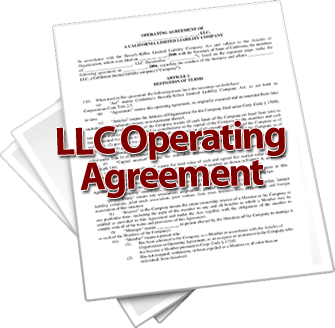The next point on my formalities checklist has to do with how you sign documents for your company. Item #18 asks “Have you executed every document that you have executed on behalf of the company as its manager/member, to guard against personal liability?”
In order to do this effectively, it is also important to go back and make sure you have already done #3, “Have you appointed the appropriate members and managers of your company and had them sign the appropriate documents?”
Executing a document does not mean that you kill it. It means you make it live by doing what needs to be done, by signing it in your official capacity according to the position you hold in your company.
It should be pretty obvious, but this is often overlooked by people. In your business capacity (president, secretary, manager, or whatever capacity you operate in), you need to sign documents under the authority you have been given in that capacity. That means you need to sign your name and then state your capacity after your signature. So, it is “John Doe, Pres,” “John Doe, Sec,” or “John Doe, Mgr.”
Every time you sign anything regarding your company, make sure your signature reflects the capacity under which you are signing. When you set up the company bank account, sign the signature card in a way that indicates which hat you are wearing–manager, owner, member, etc. Sign your name and then your position so that everything is kept straight.
In order to do this right, you need to have the company positions outlined in the operating agreement. In each place you sign your operating agreement, you need to make sure you sign it noting what position you are acting in as you sign it. As you move forward, make sure you are acting in the correct capacity according to the operating agreement whenever you sign a document, and make sure you note the correct position you are signing as.
In order to keep your corporate shield, you need to put people on notice that others are dealing with the company rather than with you as an individual. One of the big factors in this game is how you, as the president or manager of your little company, sign documents.
I had a person come to me and complain that he had prepared his LLC with LegalDoom, and it hadn’t protected him when he got sued. It turned out the argument had nothing to do with the documentation used to establish the LLC. You need to know that just having an LLC filed with the state does not protect you when you get sued.
This person was being sued by a company he had done business with for years. He had started dealing with them as a sole proprietorship (full liability) and had just continued dealing with them under the same old terms, even after he had converted his business to an LLC. The person suing him argued that he had never been appraised that he was dealing with a company and not an individual. The checks hadn’t been reprinted; the letterhead was the same. When the owner signed invoices and other documents, he never signed with his position representing a company.
The person suing had an easy argument and the court set aside any protection the LLC might have offered. The court agreed that there was nothing to indicate that there was a company and not just an individual. Can you see why it is important to sign in your capacity as an officer of the company?
It isn’t a matter of ego; it is a matter of notification. Don’t be bashful, sign as PRESIDENT or MANAGER of the company. I don’t think you need to have people call you Mr. President or Madame President, but they do need to know you are representing the company and not acting on your own.

I’m a writer of children’s books and I want to setup my business as an S corporation. I’m looking to publish my written work with, animation DVD, music sells. How would I start my LLC with an S corporation of just myself. I would need protection dealing with contractors I would hire.
Kimberly,
You will need to first register your LLC with the state. Then you will need to get an EIN number from the IRS. Once you have the EIN number you can then file IRS form 2553 to have your LLC taxed as an S-Corp. It does not matter if your are the sole owner of the LLC.
Hi there
I will be soon registering a LLC and to get an EIN and file form 2553 to have my LLC taxed as an S Corp. Where/when do I file the Operating Agreement?
Deborah,
You will need to first register your LLC with the state. Then you will need to get an EIN number from the IRS. Once you have the EIN number you can then file IRS form 2553 to have your LLC taxed as an S-Corp. It does not matter if your are the sole owner of the LLC.
Deborah,
You don’t have to file the operating agreement. The operating agreement is for your internal records on how to run your company. Sometimes banks or when buying a property you will need to show them a copy of the operating agreement. They will take a copy, but it will be kept as part of their files on you. It will not get filed in public records.
I believe that you just hold onto your operating agreement for your own protection to pull out if you need to.
The operating agreement is an internal document that you will keep in your own records. Sometimes banks will want to see a copy of it when you are trying to set up an account or obtain a loan. The only time it will ever become a public document is if there is a lawsuit.